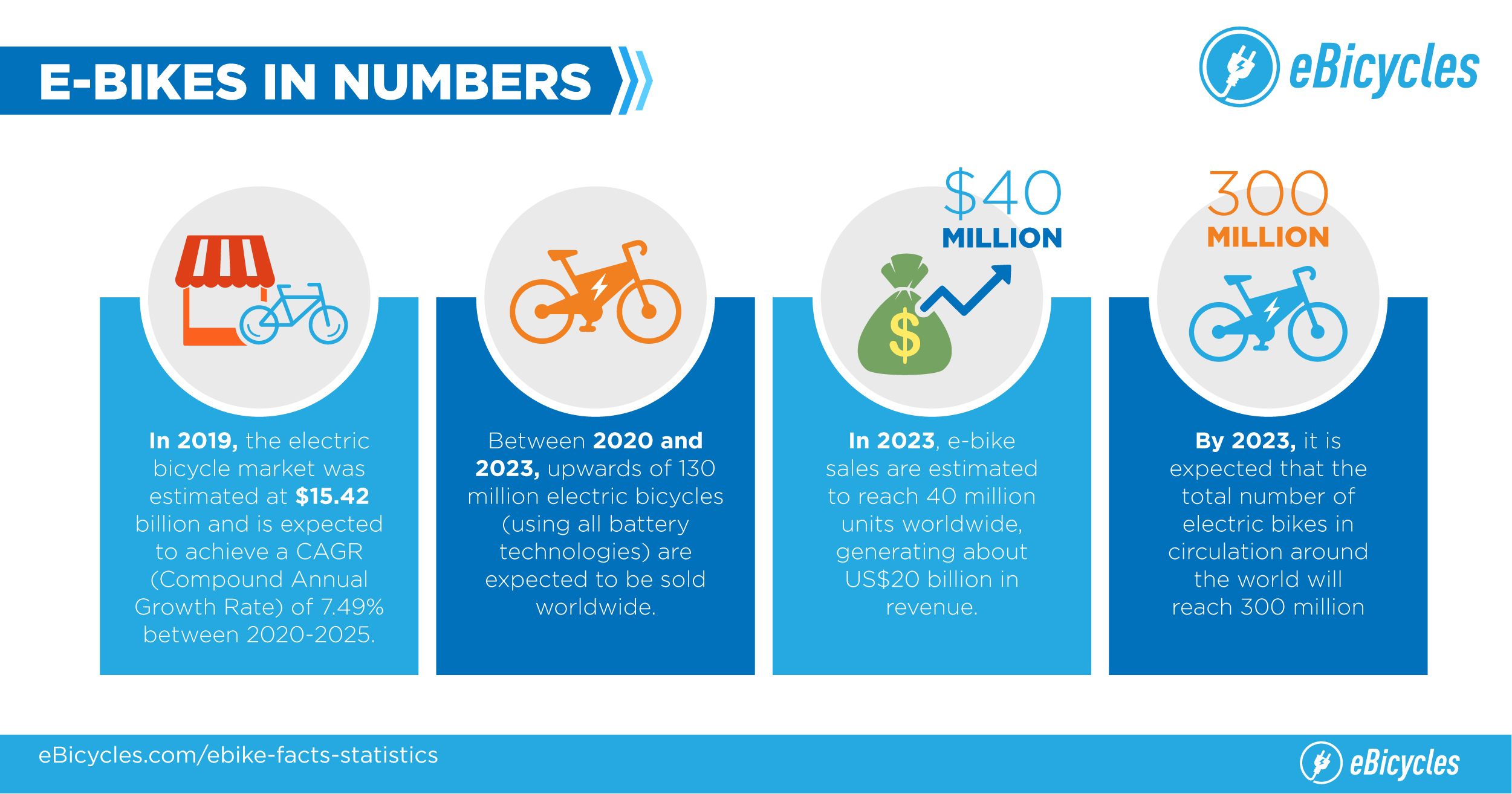What are eBikes and How Do They Work?
Electric bikes, or eBikes, are pedal-assist bicycles that offer a unique blend of human power and motorized assistance. These environmentally friendly vehicles are equipped with a battery-powered motor that amplifies the rider’s pedaling efforts, making cycling more accessible and less physically demanding. eBikes come in various classes, each with distinct motor power limits and operational characteristics.
Class 1 eBikes, also known as pedal-assist eBikes, provide motor assistance only when the rider is actively pedaling, with motor power capped at 20 mph. Class 2 eBikes, or throttle-assist eBikes, offer motor assistance regardless of whether the rider is pedaling, with motor power also limited to 20 mph. Class 3 eBikes, or speed pedelecs, provide pedal-assistance up to 28 mph, making them a popular choice for commuters seeking a faster and more efficient mode of transportation.
The growing popularity of eBikes for fitness purposes can be attributed to their ability to offer low-impact exercise and customizable workout intensity. By allowing riders to control the level of motor assistance, eBikes enable users of varying fitness levels to enjoy a challenging and enjoyable workout tailored to their individual needs and abilities.

eBikes for Fitness: A New Perspective
The use of eBikes for fitness purposes has gained significant traction in recent years, offering a fresh and exciting approach to exercise. eBikes provide a low-impact workout, making them an excellent option for individuals with joint issues or those looking to avoid the strain associated with high-impact activities such as running or jumping. By incorporating eBikes into a fitness routine, users can enjoy a wide range of health benefits while minimizing the risk of injury.
One of the primary advantages of eBikes for fitness is their ability to customize workout intensity. With adjustable pedal-assist levels, riders can easily control the level of motor assistance, allowing them to tailor their workout to their specific fitness goals and abilities. This versatility makes eBikes an ideal choice for users of all fitness levels, from beginners looking to build endurance to experienced cyclists seeking to maintain their fitness during injury recovery or periods of reduced mobility.
Moreover, eBikes for fitness offer a unique blend of outdoor exercise and practical transportation. By commuting to work or running errands on an eBike, users can seamlessly incorporate physical activity into their daily routines, making it easier to achieve recommended weekly exercise guidelines. This convenience and flexibility can help users maintain a consistent fitness routine, ultimately leading to improved cardiovascular health, increased muscle strength, and enhanced overall well-being.

Real-World Examples: eBike Models for Fitness Enthusiasts
For those looking to invest in an eBike for fitness purposes, several models cater specifically to the needs of fitness-oriented users. These eBikes offer unique features and advantages designed to enhance workout intensity and overall performance.
The Specialized Turbo Vado SL is a prime example of an eBike tailored for fitness enthusiasts. This lightweight, high-performance eBike boasts a powerful motor and a sleek, aerodynamic design, making it an ideal choice for users seeking a challenging workout. The Turbo Vado SL features a customizable pedal-assist system, allowing riders to adjust the level of motor assistance and fine-tune their workout intensity. Additionally, its integrated fitness metrics display provides real-time data on speed, distance, and calories burned, enabling users to track their progress and set fitness goals.
Another eBike model well-suited for fitness-oriented users is the Cannondale Quick Neo SL. This versatile eBike offers a smooth, comfortable ride with its advanced suspension system and plush saddle, making it an excellent option for users who enjoy long-distance rides or off-road adventures. The Quick Neo SL features a potent motor and multiple pedal-assist levels, allowing riders to customize their workout intensity and conquer even the steepest hills with ease. Furthermore, its integrated smartphone mount and GPS enable users to navigate new routes and explore unfamiliar terrain, adding an element of excitement and adventure to their fitness routine.

How to Incorporate eBikes into Your Fitness Routine
Integrating eBikes into an existing fitness regimen can be a seamless and rewarding experience. By following a few simple guidelines, users can effectively harness the potential of eBikes for fitness while maintaining a balanced exercise routine.
First, consider the frequency of eBike workouts. To achieve noticeable fitness gains, aim to incorporate eBike rides into your routine at least two to three times per week. This frequency allows for consistent cardiovascular exercise and muscle strengthening while also providing adequate recovery time between workouts.
Next, determine the ideal duration for each eBike session. For beginners, start with shorter rides of 20 to 30 minutes, gradually increasing the duration as fitness levels improve. Intermediate and advanced users may benefit from longer rides of 60 minutes or more, which can further enhance cardiovascular endurance and muscular strength.
When it comes to workout intensity, eBikes offer the unique advantage of customizable pedal-assist levels. This feature allows users to adjust the level of motor assistance and tailor the workout to their specific fitness goals. For a more challenging workout, opt for lower pedal-assist levels or even manual mode, which relies solely on human power. Conversely, for a lighter workout or recovery ride, increase the pedal-assist level to reduce physical strain.
To ensure continued progress and motivation, set clear fitness goals and track your progress over time. Utilize the integrated fitness metrics display on your eBike or a separate fitness app to monitor speed, distance, and calories burned during each workout. Regularly review your progress and adjust your fitness goals as needed to maintain a challenging yet achievable workout routine.

Comparing eBikes with Traditional Bicycles: A Balanced View
When considering eBikes for fitness, it’s essential to compare their benefits with those of traditional bicycles. Both modes of transportation offer unique advantages and potential concerns, making it crucial to strike a balance in usage to maximize fitness gains.
Traditional bicycles provide a straightforward, human-powered exercise experience. Riders can control the intensity of their workouts by adjusting their pedaling speed and gear selection, making them an excellent option for those seeking a challenging cardiovascular and strength-building workout. However, the high-impact nature of cycling can lead to joint strain or discomfort, particularly for beginners or those with existing injuries.
eBikes, on the other hand, offer a low-impact exercise alternative that still delivers many fitness benefits. The pedal-assist feature allows riders to customize their workout intensity, making it easier to maintain a consistent exercise routine despite varying fitness levels or physical limitations. This customization can help users gradually increase their workout intensity, promoting long-term fitness gains without the risk of overexertion or injury.
One potential concern with eBikes is the reduced physical effort required during rides, which may lead to overreliance on motor assistance. To mitigate this risk, it’s essential to balance eBike usage with other forms of exercise, such as strength training, high-intensity interval training, or traditional cycling. By incorporating a variety of workouts into your fitness regimen, you can ensure a well-rounded exercise routine that addresses multiple aspects of physical fitness.
Additionally, eBikes can encourage a more active lifestyle by making it easier to incorporate regular exercise into daily routines. Users may be more likely to choose cycling as a mode of transportation for commuting or running errands, increasing their overall physical activity levels and contributing to improved cardiovascular health and overall well-being.

Science Behind eBikes and Fitness: Examining Research Findings
As the popularity of eBikes for fitness continues to grow, researchers have begun to explore the impact of eBike usage on cardiovascular health, muscle strength, and overall well-being. Preliminary findings suggest that eBikes can indeed contribute to improved fitness levels, making them a valuable addition to a well-rounded exercise routine.
A study published in the Journal of Medical Internet Research examined the physiological responses of eBike users compared to traditional bicyclists. The results demonstrated that eBike riders experienced similar cardiovascular benefits, including increased heart rate and oxygen consumption, to those of traditional cyclists. This suggests that eBikes can provide a low-impact, yet effective cardiovascular workout, making them an appealing option for those looking to improve their heart health.
Another study in the Journal of Transport & Health explored the potential for eBikes to encourage a more active lifestyle. Researchers found that eBike users significantly increased their overall physical activity levels, with many reporting that eBikes made it easier to incorporate regular exercise into their daily routines. This increased physical activity led to improvements in mental health, weight management, and overall well-being, highlighting the potential for eBikes to contribute to a healthier lifestyle.
While eBikes can provide numerous fitness benefits, it’s essential to address potential concerns regarding reduced physical effort and potential overreliance on motor assistance. A study in the Journal of Sports Sciences found that eBike users still experienced significant muscle activation, particularly in the lower body. However, riders should be mindful of their motor usage and aim to balance eBike workouts with other forms of exercise to ensure a well-rounded fitness regimen.
In conclusion, scientific research supports the use of eBikes for fitness purposes, demonstrating their potential to improve cardiovascular health, encourage a more active lifestyle, and contribute to overall well-being. By incorporating eBikes into an existing fitness routine and maintaining a balanced exercise regimen, riders can enjoy the unique benefits of eBike workouts while mitigating potential concerns.

Expert Opinions: Fitness Professionals Weigh In on eBikes for Fitness – Can It Help?
As the popularity of eBikes for fitness purposes continues to rise, it’s essential to consider the insights of fitness professionals and cycling coaches. These experts can provide valuable perspectives on the benefits and challenges of incorporating eBikes into a well-rounded exercise routine.
Fitness professional Sarah Johnson emphasizes the low-impact nature of eBike workouts, stating, “eBikes offer a fantastic alternative to high-impact exercises like running or jumping. They’re perfect for individuals recovering from injuries or those looking to reduce stress on their joints while still reaping the benefits of cardiovascular exercise.”
Cycling coach Mark Thompson highlights the ability to customize workout intensity as a significant advantage of eBikes for fitness. “With various pedal-assist levels, eBikes allow riders to tailor their workouts to their specific fitness goals and abilities. This flexibility makes eBikes an excellent option for individuals at any stage of their fitness journey.”
Testimonials from eBike users further illustrate the potential benefits of incorporating eBikes into a fitness routine. Jane, a 45-year-old mother of two, shares her experience: “I was hesitant to start cycling again after a knee injury, but eBikes have made it possible for me to enjoy long rides without pain. I’ve even noticed improvements in my leg strength and overall fitness.”
However, fitness professionals also emphasize the importance of balancing eBike usage with other forms of exercise. Personal trainer Mike Davis explains, “While eBikes can provide numerous fitness benefits, it’s crucial to incorporate a variety of exercises into your routine to ensure a well-rounded fitness regimen. Consider incorporating strength training, stretching, and other cardiovascular activities to maintain a balanced approach.”
In conclusion, fitness professionals and cycling coaches recognize the potential benefits of eBikes for fitness purposes, including low-impact exercise and customizable workout intensity. By incorporating eBikes into an existing fitness routine and maintaining a balanced exercise regimen, riders can enjoy the unique advantages of eBike workouts while mitigating potential concerns.

Empowering Your Fitness Journey: The Future of eBikes for Fitness – Can It Help?
As eBikes continue to gain popularity, their potential role in the fitness industry is becoming increasingly evident. The future of eBikes for fitness holds exciting possibilities, with advancements in technology, growing popularity, and the potential to promote sustainable transportation and active living.
One key aspect of the future of eBikes for fitness is the ongoing development of innovative technology. Manufacturers are constantly seeking ways to improve eBike performance, efficiency, and user experience. This includes advancements in battery technology, motor efficiency, and connectivity features. As these technologies evolve, eBikes will likely become more accessible, affordable, and user-friendly, further solidifying their place in the fitness landscape.
Another factor contributing to the growth of eBikes for fitness is their increasing popularity. As more people discover the benefits of eBikes for low-impact exercise and customizable workout intensity, demand for eBike-related fitness products and services is likely to increase. This growing interest will drive the creation of new eBike models, fitness programs, and community events, fostering a vibrant and supportive eBike culture.
In addition to their role in personal fitness, eBikes have the potential to promote sustainable transportation and active living. By offering a practical and enjoyable alternative to cars for short-distance commuting and errands, eBikes can help reduce traffic congestion, air pollution, and greenhouse gas emissions. Furthermore, eBike users are more likely to engage in regular physical activity, contributing to improved public health and well-being.
To maximize the benefits of eBikes for fitness, it’s essential to maintain a balanced approach. While eBikes can provide numerous fitness advantages, it’s crucial to incorporate a variety of exercises into your routine to ensure a well-rounded fitness regimen. Consider combining eBike workouts with strength training, stretching, and other cardiovascular activities to maintain a balanced and holistic approach to fitness.
In conclusion, the future of eBikes for fitness is promising, with advancements in technology, growing popularity, and the potential to promote sustainable transportation and active living. By effectively incorporating eBikes into an existing fitness routine and maintaining a balanced exercise regimen, riders can enjoy the unique advantages of eBike workouts while contributing to a healthier and more sustainable world.

